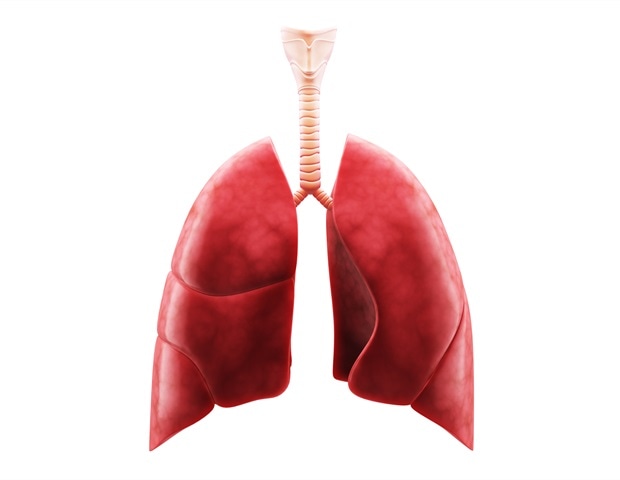World Lung Day | Lupin’s Rajeev Sibal on the urgency of addressing respiratory diseases’ disproportionate impact on global health

Air pollution increases the risk of chronic respiratory diseases like COPD, asthma, respiratory infections and lung cancer.
As per the World Health Organization’s (WHO) 2021 revised Fine Particulate Matter (PM2.5) thresholds, an estimated 7.3 billion people are exposed to unsafe average concentrations of 5 μg/, while a monstrous 80% of them are in low-and middle-income countries. Thus, the current situation contradicts the vision set by the WHO’s Global Alliance against Chronic Respiratory Diseases (GARD) of ‘a world in which all people breathe freely’.
Approximately 7.4% of the Indian population is affected by COPD. An estimated 30 million Indians are living with asthma, with approximately 3 million being classified as ‘inadequately controlled,’ and facing a higher risk of exacerbations that may lead to hospitalisation. In India, lung cancer accounts for 5.9% of all cancers and 8.1% of all cancer-related deaths.
These stark incongruities are not accidental; they result from entrenched social, economic, and environmental inequalities. Addressing these challenges demand a bold, comprehensive response, including raising awareness, improving access to quality healthcare, and implementing targeted interventions that address the underlying root causes.
Raising Awareness — Public Education and Advocacy
With an 80% prevalence of smoking among lung cancer patients, raising awareness and promoting lung health education are critical first steps. Educational campaigns targeting at-risk populations highlight the importance of early detection and prevention strategies. Training healthcare providers to deliver culturally competent care can help overcome barriers to accessing care, such as language differences and mistrust of the healthcare system, a vital step in a diverse country like India.
Case in point — innovative platforms such as the Joint Airways Initiative (JAI), India’s first digital asthma educator platform, which demonstrates the potential of technology in empowering patients to manage their respiratory conditions effectively by providing personalised services such as guidance on inhalation techniques, physiotherapy, dietary advice, yoga, and medication adherence support.
Overcoming Barriers — Improving Access to Care
In underserved communities, the scarcity of dedicated pulmonary care facilities is a pressing issue, especially considering that over half of the patients visiting primary care physicians in 880 cities and towns across India report respiratory symptoms. It underscores the critical need for improved access to specialised lung health services that are currently hindered by lack of insurance, high costs, and limited means of transportation.
Expanding access to preventive services such as vaccinations, lung cancer screenings, and spirometry testing, coupled with access-focused solutions such as mobile health clinics and telemedicine, can address this disparity for underserved populations.
Combating Inequality — Targeted Public Health Interventions
A range of targeted public health interventions is essential to address the specific factors contributing to lung health inequality in different communities. Some key interventions include occupational health programs to protect workers in high-risk industries, community-based screening programs for early detection of lung diseases, and comprehensive tobacco control initiatives in regions with high smoking rates.
Remote monitoring technologies can enhance lung health management by allowing real-time tracking of patients’ conditions. In areas with high rates of asthma or COPD, interventions might focus on improving indoor air quality and providing education on disease management. Government support in policies that expand health insurance coverage, reduce out-of-pocket costs for patients, and incentivize healthcare providers to establish lung care facilities can significantly improve access to care and, consequently, lung health outcomes.
Protecting Environment — Urgent Need for Climate Action
The link between lung health disparities and environmental issues is glaring in India, where 50% of COPD cases are attributed to indoor and outdoor air pollution. The need for environmental justice is immediate, particularly in marginalised communities where exposure to harmful pollutants is disproportionately high. Rising temperatures, extended allergy seasons, and increased air pollution from wildfires make breathing increasingly difficult.
Additionally, low-lying areas face a growing threat from climate-induced flooding, making people vulnerable to community-acquired pneumonia and threatening lung health in children and seniors. While advocacy for stricter emissions standards and a rapid transition to clean energy is crucial, medical innovations such as certified carbon-neutral pressurised metered dose inhalers (pMDIs) are essential climate actions by responsible businesses advocating for better access to lung health. Broader climate actions, including reforestation initiatives, sustainable urban planning, and the development of greener public transport systems, can alleviate the environmental burdens.
On World Lung Day, it is crucial to recognise the critical juncture that we are facing in addressing the lung health disparities, where timely and decisive action is essential. Addressing these inequities requires a holistic approach that intertwines healthcare, education, and environmental justice. By implementing this integrated approach, we can work towards mitigating the disproportionate impact of respiratory diseases on global health a reality.
—The author, Rajeev Sibal, is President – India Region Formulations, Lupin Ltd. The views expressed are personal.
link






